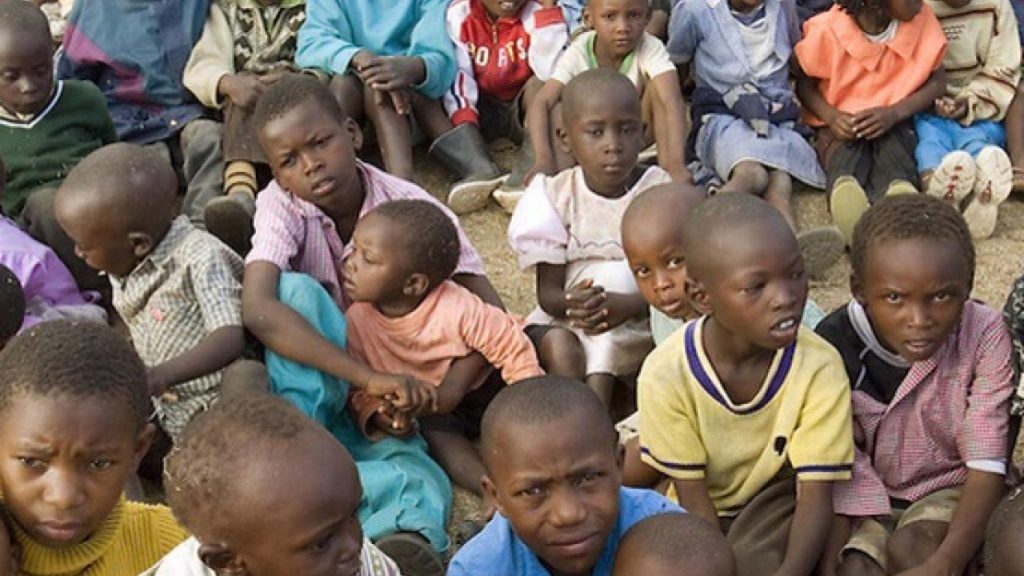A Greater number of more than 190 million Nigerians are currently suffering from chronic under-nourishment.
Like in most parts of Sub-Sahara Africa, adverse climate conditions, a slow global economy and conflicts are said to be the key factors driving food insecurity in Nigeria.
Hard facts from the Food and Agriculture Organisation (FAO), an agency of the United Nations tend to indicate that 489 million, of the 815 million people in the world who were undernourished in 2016 live in countries struggling with conflict, violence and fragility.
Besides the Boko Haram epidemic in Northern Nigeria, the agitation for Biafra has been unsettling Eastern Nigeria, just as militancy in the volatile oil and gas region has been quite disturbing. Directly linked with the hunger situation in the region is oil pollution.
However, according to the FAO on Thursday, the number of undernourished people in sub-Saharan Africa has increased mainly due to the impact of conflict and climate change with the situation pointing to the urgent need to build affected communities’ resilience and to find peaceful solutions that strengthen food security.
The prevalence of chronic undernourishment appears to have risen from 20.8 to 22.7 percent between 2015 and 2016, according to FAO’s Africa Regional Overview of Food Security and Nutrition report (2017).
“The number of under-nourished people rose from 200 to 224 million, accounting for 25 percent of the 815 million people undernourished in the world in 2016,” said Bukar Tijani, FAO Assistant Director-General and Regional Representative for Africa.
“Major factors have caused this surge in hunger: the proportion of the population that has experienced severe food insecurity because of their inability to access food has risen in the region; as well, adverse climatic conditions and conflict, often occurring concurrently, are key factors driving the recent increase in food insecurity in the region,” Tijani explained.
This year’s report, which features the theme: “The Food Security and Nutrition – Conflict Nexus: Building Resilience for Food Security, Nutrition and Peace” was launched today at the joint FAO/WHO Africa Regional Symposium on Sustainable Food Systems for Healthy Diets and Improved Nutrition, took place in Abidjan last Thursday through Friday.
The report indicates that during the first decade of the millennium, sub-Saharan Africa made sound progress in the fight against hunger with the prevalence of under-nourishment falling from 29.1 percent to 20.6 percent. However, this was followed by a period of no progress with worsening conditions in 2015 and 2016 in many countries. This was mainly due to the impact of conflict and adverse climatic conditions such as repeated droughts – often linked to the El Niño phenomenon – resulting in poor harvests and the loss of livestock.
The Hunger-Conflict Nexus
In sub-Saharan Africa, the majority of the under-nourished population in 2016 live in countries affected by conflict. The prevalence of under-nourishment is about twice as high in conflict-affected countries with a protracted crisis than in countries not affected by conflict, and nutrition outcomes are also generally worse in these countries.
Although the frequency of wars has decreased over the decades, there has recently been a surge in the number of violent conflicts and conflict-related deaths. More than one third of the world’s highly violent conflicts took place in sub-Saharan Africa and of 19 conflict-affected countries in protracted crises, 13 are in sub-Saharan Africa.
Building Household Resilience
The FAO report identifies a range of pathways through which support to food security and livelihoods can also help build resilience against conflict and contribute to sustaining peace. Given the complexity of conflicts and the conflict-food insecurity nexus, which climate change may amplify, a sustainable impact of food security and nutrition-related interventions on peace is more likely when implemented as part of a broader, multi-sectoral set of interventions before, during and after conflicts.
The report notes how many countries have developed or are developing policy frameworks and investment plans that are aligned with the goals of the Malabo Declaration and SDG 2. And this requires adequate funding, setting the right priorities and strengthening institutional capacities.
The Malabo Declaration
Through the 2014 Malabo Declaration, African leaders reaffirmed the principles and values of the Comprehensive Africa Agriculture Development Programme (CAADP) and recommitted their countries to end hunger and halve poverty by 2025, boost intra-African trade, and enhance the resilience of livelihoods and production systems to climate change and other shocks.

